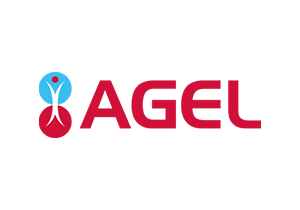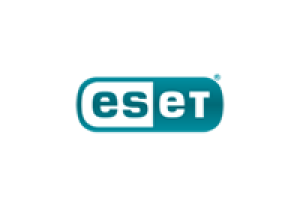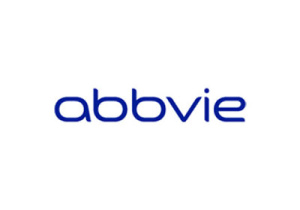
Michal Ševčík
Michal Sevcik obtained his Master's degree at the Slovak Technical University in Computer Science. After finishing his studies he started to gather his professional experience as a junior analyst working for Digital. Later he has gained experience and skills working on software development projects for key players in the financial and mortgage brokering market in New Zealand and Australia. Since his return to Slovakia in 2001 he has been working for Compaq and then Hewlett-Packard as a business analyst and solution architect using his experience and skills to analyze, design and implement complex IT projects and deliver system integration projects in the public sector. Since 2004 he was focusing mainly on the technologies and projects related to ePassports, national IDs and other identity documents. He has contributed to the successful setup of the Slovak National Personalisation Centre. He was also involved as a lead solution architect in two major projects successfully implemented for Slovak Ministry of Interiors – implementation of National Schengen and Visa Information System and extension of the National Personalisation Centre to provide the capability for personalizing secondary biometric passports. Two years ago he has been involved in the successful implementation of an electronic vehicle registration project for the Slovak Ministry of Interiors. Currently Michal takes part in the implementation of the eID project, in the upgrade of the Schengen system as well as in the project of mobile verification and screening of the documents. The latest professional interests of Michal is the Enterprise Architecture and its implementation and effective utilization in the government enterprises.
Sign in to Autumn ITAPA 2024
-
From the egosystem to the ecosystem of data | Medzinárodný kongres ITAPA 2019
-
Discussion | Medzinárodný kongres ITAPA 2018: Hacking the Future
-
Is eID multiplatformed? | Kongres ITAPA 2013: Putting IT together
Why not to miss the presentation?
The project that will radically change the character of eGovernment user; it will become a truly national matter. Introduction of electronic identification cards will enable mass distribution of electronic identification of citizens. It is therefore necessary to know how the ID will be prepared technically and how this project can deal with great variability of applications and software equipment of citizens. Michal Ševčík was a key person behind the success of some of the biggest electronic projects in Slovakia, e.g. National Schengen and Visa systems. Will eID project be likewise a success?
Executive Summary:
Since the beginning of december 2013 the electronic identification cards (eID) will be issued. The issuance of the eID cards is the part of a process of electronisation of the government. Through this electronisation, the services of government will be accessible over the internet via electronic eGovernemnt services. The eID card should be a trustworthy authentication device to enable citizens to access the eGovernment services. This card represents a secure device for storing the identification data of a citizen, in other words, electronic identification of the citizen. When does the eID card have a chance to succeed among the citizens? Its success in eGovernment depends on the accessibility of electronic services and their quality as well as on readiness of the infrastructure and the accessibility of software for the interaction with the eID card. The software for interaction with the eID card allows the citizen to authenticate and to use the eID card for the qualified electronic signature (QES). From the point of usability of the software that allows authentication using the eID card, the essential property is a platform independence. Citizens use various operating systems installed on their desktops and laptops and for the access to the internet they use various internet browsers. Beside this everyone may have a different software installed on his/her computer as well as the different controllers for the peripheral devices. The same thing regards the internet browsers that could have various configurations settings. That’s why there is a clear expectation the software that will be installed on a computer of a citizen and that will be a used to enable authentication using the eID card that it will be provided for the most commonly used operating systems (Windows, Linux, Mac) and that it will support the most commonly used internet browsers (Internet Explorer, Firefox, Chrome, Safari, Opera). -
eID – a key to the eGovernment | Kongres ITAPA 2012: Zaostrené na výsledky
Slovakia has been for quite some time preparing itself for the informatization of the public administration and especially for the introduction of e-government services. Currently the work on legislation is being finished that aims to enable the launch of the first set of e-government services into the real life. An essential step for such electronic communication with the authorities on the Internet as well as for the complex process of informatization of the public administration is to introduce new electronic ID cards. How this essential step helps to convert some sections of the new legislation into real life? What exactly will the new eID card do for citizens and when? Once again, some question arises whether concerns of citizens about the loss of privacy are the legitimate ones, whether the risks associated with electronic surveillance of citizens in the electronic world are adequately addressed. -
Authentication and identification – the pylon in providing eServices | Kongres ITAPA 2011: Desať rokov inspirácií
The Ministry of Interior of the Slovak Republic prepares to launch new national identity cards (eIDs) equipped with an electronic chip. Not everyone knows what is the main purpose of the integrating an electronic chip into the IDs. This particular step is a part of the global process of building information society. Main goal is to enable smooth communication between the citizens and/or organizations with the government offices over the internet. In future, the life situations like changing the permanent address when moving to a different location, registration of a vehicle, registration at the Labor office will be easily accessible via the internet. The companies and various organizations might easier process the situations like filling and submitting the tax declarations, start or close a firm, registering a new employee, submitting the statistic reports. It would enable us to forget about travelling to the nearest municipality's offices and waiting in the endless lines. To perform the processes of the Government services on the Internet the authentication and identification of a citizen or legal entity are of the highest importance. The office/service must know unambiguously who it is communicating with. To serve this purpose, the electronic identity card will have two important functions – authentication and identification. How will the identity card protect our identity – our personal data? Are we going to lose our identity? Will every move we make be tracked? These are very important questions asked by the public. The protection of personal data is researched by the German Federal Office for Information Security, which has for the German e-ID developed a special mechanism for authentication and identification on the internet – EAC Online Authentication. The principle of the mechanism is based on the identity securely stored in the restricted area of the chip. The citizen presents his/hers electronic identity to a government service, whilst the concept is paying extra attention to a protection of the personal data stored on the chip. Technically said, it is possible to read out the data stored on the chip only if the citizen approves it by entering the PIN and only if the service provider has a valid certificate issued by the State. The certificate determines access rights of a service provider. Only authorized service providers will have such certificates and thus could request reading of chip data from the card. In addition, the holder of the card has a full control of the data set to be read from the chip and to be presented to the service provider. Before submitting the data are displayed and citizen can adjust the list as necessary – the access to some specific data can be refused. -
Can eID card make life easier and more secure? | Kongres ITAPA 2010: Tam, kde sa svety stretávajú
One of the most important roles of eID card is to allow citizens a safe and reliable method of accessing electronic services. When we talk about electronic services it is not reasonable to focus only on eGovernment. One should also take into consideration eHealth, eBanking, eVoting, eShopping and other e-services. EID card is to be understood not only as the secure storage of personal and sensitive data of a citizen - the holder of the eID card, but also as a gateway to other personal information. This implies a set of risks for the protection of citizens' privacy through inadvertent disclosure of personal information. These risks may result in strong demotivation of citizens to use eID cards. What measures and technical solutions should take the card issuer to address these risks, particularly in cases where the possesion of such cards is mandatory for citizens? How a specific application of eID cards in practice could look like in Slovakia? -
| Kongres ITAPA 2009: Art of eServices
-
eID centric approach for building eServices and electoral process modernization | Kongres ITAPA 2009: Art of eServices
Nowadays there are a lot of projects aimed at the computerization of public administration being implemented in the developed countries around the world with varying intensity and success. Also Slovakia is gradually preparing eGovernment implementation thus starting development of eServices.Is it necessary to build eServices using electronic identification card? Is the use of eID as a mean for qualified electronic signature a sole benefit while building eGovernment? What other specific benefits brings the use of eID to the implementation of eServices? What are the prerequisites for successful eID centric approach for building eServices?Within this context it is not proper to narrow down the view of the eServices only to services of public administration. Conversely, it is appropriate to look at them through the wide-angle optics and to see them also as services provided to citizens by business entities. Also these service providers can evenly successfully exploit the opportunities offered by the introduction of eID while implementing the eServices.The level of direct democracy - interaction with citizens is considered as one of main features that prove development of a country. Slovakia is going to implement eServices in the field of citizen rights guaranteed by the Constitution. The right to vote represents the opportunity for a citizen to influence the future of his country as well as his private life. The future of eGovernment is electoral modernization at all levels.eID implementation can become one of significant steps, which is able to support trust, effectivity and security of e-voting. The most important assumptions of e-voting success are authentication of voters, anonymity and restraint of multi-voting. What is the role of eID? What are experiences of eID utilization in e-voting abroad? -
Trends | Kongres ITAPA 2008: Breaking with Traditions




















